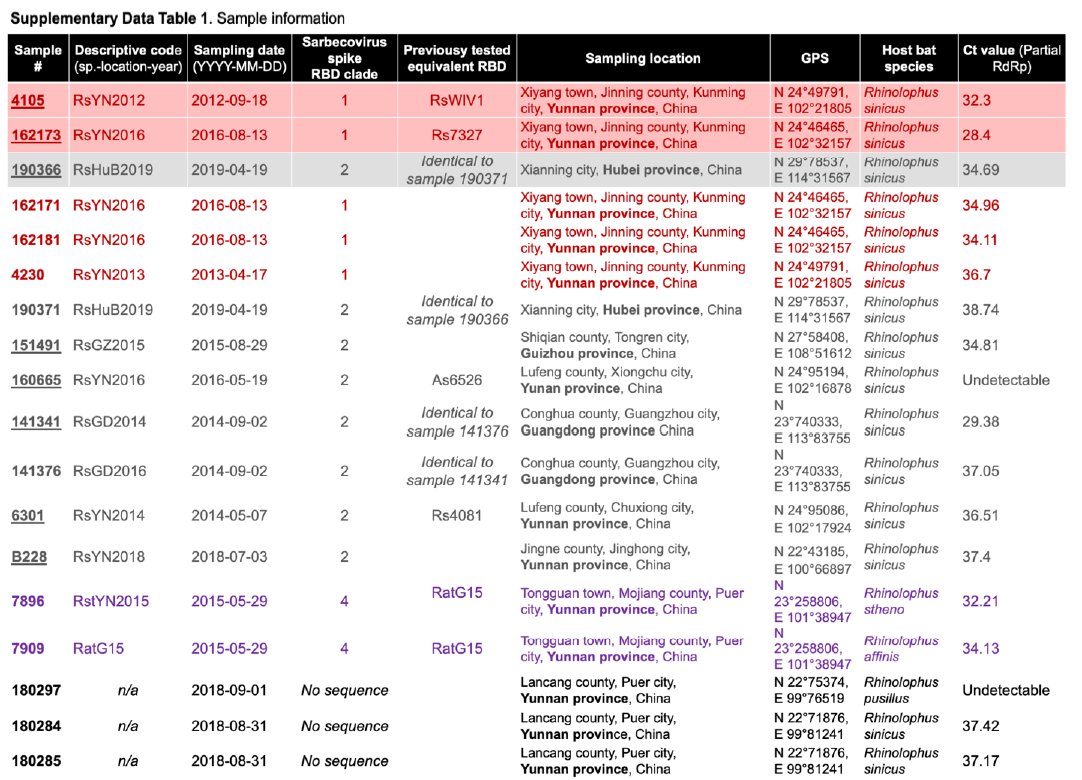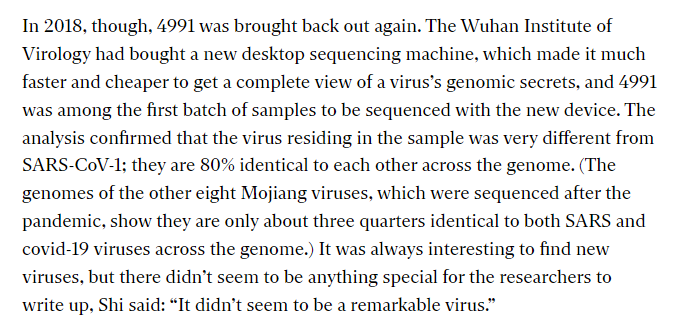[Thread] In-silico molecular overclocking of RaTG13.
TLDR: 191-nt RdRp segments of SARS-CoV-2, RaTG13 and Ra7896 show an unexpected molecular clock behavior. In-silico synonym mutations is one probable explanation.

TLDR: 191-nt RdRp segments of SARS-CoV-2, RaTG13 and Ra7896 show an unexpected molecular clock behavior. In-silico synonym mutations is one probable explanation.


Assuming SARS-CoV-2 is an ancestor of Ra7896 (used in RaTG13) does not fully explain it. Implied evolutionary rate would be in the order of 10^-2 substitutions/site/year in a well-conserved part of the genome, far from a normal ~10^-3 for a complete genome
https://twitter.com/franciscodeasis/status/1371636663064137729
So, it is not only SARS-CoV-2 having its molecular clock frozen, but also RaTG13 molecular clock running more than expected.
@nerdhaspower and @quay_dr have already noted strange patterns of synonym mutations along the genome of RaTG13
@nerdhaspower and @quay_dr have already noted strange patterns of synonym mutations along the genome of RaTG13
I always make this assumption: WIV ability of faking sequences is not unrestricted. They would never fake aa seqs, due to the protein folding problem. In a few months or years, they would be discovered
technologyreview.com/2020/11/30/101…
technologyreview.com/2020/11/30/101…
So, in silico, WIV would never make:
- non-synonymous mutations
- splicing within genes
But they could make:
- synonymous mutations
- swap genes or the complete genome from other real viruses
- non-synonymous mutations
- splicing within genes
But they could make:
- synonymous mutations
- swap genes or the complete genome from other real viruses
Why fabricating RaTG13?: To make it appear more distant than it really is. You probably never heard of that 98.65% identity between SARS-CoV-2 RdRp and Ra4991 RdRp. It was very dangerous!
https://twitter.com/franciscodeasis/status/1370797274905907204
But, if you want to make one virus appear more distant to another one without being noticed, you cannot just make orthogonal synonymous mutations, because you can get caught with the phylogenetic trees if you do not do it wisely
WIV forgot that they would eventually publish 7896 RdRp that could serve as a close outer group for SARS-CoV-2 and RaTG13.
Imagine Fig. 1 is real/base situation, A is fixed and you want B more distant.
Note: A is SARS-CoV-2, B is RaTG13 and O is the outer group (clade 7896)
Imagine Fig. 1 is real/base situation, A is fixed and you want B more distant.
Note: A is SARS-CoV-2, B is RaTG13 and O is the outer group (clade 7896)

If you just add orthogonal synonymous mutations to B, the clock is distorted (Fig 2, A & B not contemporaries). Correct way of faking would have been making a few backward synonymous mutations towards the outgroup (Fig 3), and then a few orthogonal synonym mutations (Fig 4) 

It seems that WIV forgot the backward mutations!
I was thinking if it was better to keep this secret until WIV publish their next paper of the clade 7896 to let them commit the error again. But it clearly shows up in any tree. Their problem was not checking it this short segment
I was thinking if it was better to keep this secret until WIV publish their next paper of the clade 7896 to let them commit the error again. But it clearly shows up in any tree. Their problem was not checking it this short segment
New findings support my previous assumptions: aa seqs of RaTG13 are real, although some genes could have been swapped (with other real ones)
https://twitter.com/franciscodeasis/status/1392602430823714816
...swapped a gene to make this, for example:
https://twitter.com/franciscodeasis/status/1372957569086541830
• • •
Missing some Tweet in this thread? You can try to
force a refresh


























